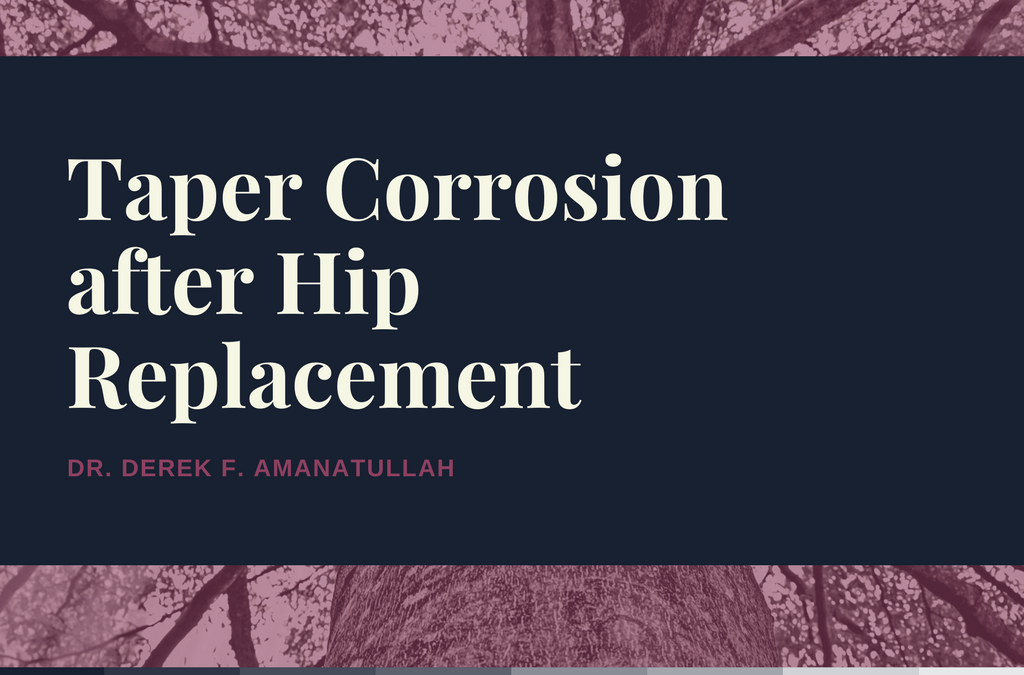Recently, Dr. Derek F. Amanatullah wrote for the book, Advanced Reconstruction, by the American Academy of Orthopaedic Surgeons. In it, he and his coauthor Dr. Michael J. Taunton discuss specific problems related to modular taper corrosion that can arise after a hip replacement as well as what a surgeon can do to diagnose and resolve the issue. Modular hip implants, in general, help reduce inventory and allow surgeons to accurately reproduce hip anatomy.
Implant corrosion in hip replacements was first described in 1956. Metals used in surgery undergo surface oxidation to protect them from corrosion. Subtle motion at modular junctions and changes in local chemistry can disrupt this surface oxidation leading to corrosion.
Any modular junction within a hip replacement can corrode. In some cases, corrosion can cause pain and damage to the surrounding soft tissue and bone. In order to determine the extent of the damage and the proper treatment, surgeons may need to perform a physical examination, get x-rays, obtain blood tests, and evaluate advanced imaging studies to evaluate a patient with suspected corrosion. Although serum cobalt and chromium ion levels have garnered mixed results, blood tests remain the gold standard of diagnosis. Additionally, a metal artifact reduction sequence MRI or ultrasound is used to detect collateral damage to the muscles and tendons.
To read the full chapter that Dr. Derek F. Amanatullah published and to learn his procedural techniques and recommendations purchase Advanced Reconstruction online today.


